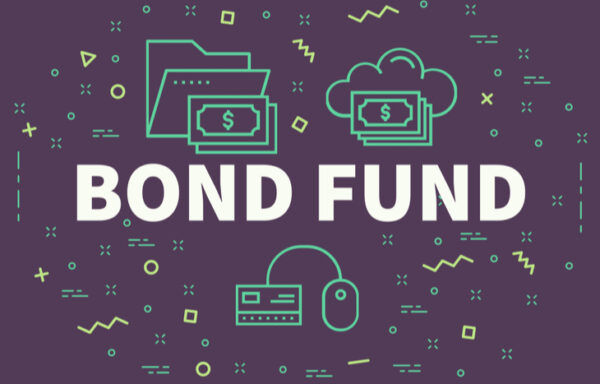What is a Bullet Bond?
When most income investors think about bonds, they’re picturing bullet bonds. Also called straight bonds, these are bonds that pay a coupon rate relative to their par value over the term of the bond. Then, at the end of the term, the investor also receives the par value in one lump sum. This is in contrast to amortized bonds, which break the par value into payments over the term.
Bullet bonds get their name from their structure. They fly straight and true over the term of the bond, and hit with an impact at the end: a windfall that nets the investor the par value. They’re typically no-frills, straightforward bonds. Hence their other nickname: vanilla bonds.
Most people who choose investment-grade bonds will find themselves investing in bullet bonds. Here’s a closer look at their hallmarks and some of the strategies specific to bullet bond investments.

Types of Bullet Bonds
Most investment-grade bonds are bullet bonds. This includes U.S. Treasuries and AAA corporate bonds. To qualify as a straight bond, debt securities must follow these specific rules:
- Must pay interest at regular intervals for the term of the bond.
- The bond pays back the principal amount in full at maturity.
- There are no special features or embedded options within the bond.
- Fixed interest rates that aren’t floating or variable.
- The bond isn’t callable, convertible or puttable.
Bullet bonds are the simplest types of bonds. And while they might trade at a discount or premium on the open market, their value really comes down to the combination of par value and coupon rate vs. current market interest rates. More exotic bonds, such as those with floating interest rates or callable bonds, don’t fall into the same category as bullet bonds.
Bullet Bonds vs. Amortizing Bonds
Bullet bonds are in contrast to amortizing bonds, which are rarer and structured a bit differently. Where straight bonds pay the par value out at the end of the bond’s term, amortizing bonds pay it out over the term of the bond, with interest.
For example, a simple 5-year bullet bond with a 5% coupon rate and a $1,000 par value will pay $50 annually for five years and $1,000 at the end of year five. Conversely, if that bond was a simple straight-line amortizing bond, it would pay $250 every year for five years. There are several types of amortizing bonds, with different conditions and features.
Bullet Bonds vs. Bullet Strategy
It’s important not to confuse bullet bonds and a bullet strategy involving bonds. The two concepts share a name because they function similarly, yet they’re different. While bullet bonds represent bonds that pay out a lump sum at their maturity, a bullet strategy involves buying bonds that coincide in their maturity dates, so they all pay out principle at the same time, in a lump sum. In most instances, investors use straight bonds as part of a bullet strategy, to capitalize on both interest payments and future lump-sum payouts.
Bullet vs. Laddering and Barbell Strategies
A bullet bond strategy is one of the “big three” bond strategies, alongside laddering and barbell approaches. Laddering sees bonds come to term in consecutive years with profits reinvested. Barbells involve chunks of bonds that mature in both the short and long-term.
A bullet strategy sees bonds purchased over a certain term, at different intervals, with all bonds maturing at the same time. For example:
- Two 10-year bonds purchased in Year 1
- Three 5-year bonds purchased in Year 5
- Three 2-year bonds purchased in Year 8
- Five 1-year bonds purchased in Year 9.
In the above example, all bonds mature in Year 10, and all pay out the par value at that time. Purchasing bonds of different maturities at different periods in a specified investing time horizon allows investors to control their interest rate risk. Moreover, investors can expect a significant lump sum payout at the end of the horizon.
Why Invest in a Bullet Strategy?
The key draw of bullet bonds or a bullet portfolio, in addition to regular coupon payments, is to benefit from a large lump sum of cash that’s paid out in the future. This typically falls in-line with some broader investment goal that requires a large principal.
Take a real estate investment, for example. An investor might need $50,000 to invest in a rental property, which is liquid cash they don’t have today. Instead, they create a bullet portfolio with a five-year maturity date. Over the course of five years, they continually add bullet bonds to the portfolio so that in year five, when the bonds come to term, they reap the $50,000 lump sum needed for a down payment on property.
Investors use bullet bonds and bullet portfolios for everything from buying property, to financing a child’s college tuition, to investing in a business and beyond.
Bullet Bonds Aren’t Risk-Free
While generally thought of as safe, bullet bonds aren’t infallible investments. Not only are they subject to interest rate risk over a long enough time horizon, there’s always risk of default for any bonds not issued by the United States Treasury. Investors need to pay attention to the interest rate environment and the credit worthiness of their bonds to avoid risk and maintain a smart investment.
Are Bullet Bonds Right for You?
Investors looking for low-risk passive income will naturally gravitate to bullet bonds. Those looking to access large lump sums of capital in the future might also find themselves drawn to bullet portfolios. In either case, the windfall at the end of a bond’s term (the bullet) is a key benefit in these investments.





